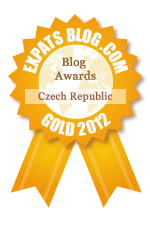 On February 15, 1971, the United Kingdom went through a process of decimalization of its currency. Before Decimal Day, the money was divided in to pounds (£), schillings (s. or /-) and pennies (d.).
On February 15, 1971, the United Kingdom went through a process of decimalization of its currency. Before Decimal Day, the money was divided in to pounds (£), schillings (s. or /-) and pennies (d.). 
There used to be 20 shillings per pound. And there were 12 pennies per shilling. So, a pound was actually made up of 240 pennies while a penny was made up of two halfpennies or four farthings (a quarter penny).
2 farthings = 1 halfpenny
2 halfpence = 1 penny (1d)
3 pence = 1 thruppence (3d)
6 pence = 1 sixpence (6d) Called a "tanner".
12 pence = 1 shilling (1s) Called a "bob".
2 shillings = 1 florin (2s) called a "two bob bit".
2 shillings and 6 pence = 1 half crown (2s 6d)
5 shillings = 1 Crown (5s)
In shops, prices were given as pounds/shillings/pence. If you saw "2/4d" then it cost 2 shillings, four pence. If you paid 1 pound then you received 17 shillings and 8 pence back in change. How on earth did the UK ever have an empire? This system would completely do my head in.
I guess if this was all you knew then it made perfect sense. However, with the age of computers it became very difficult to deal with monetary calculations. I believe that this was the main driver for switching to decimal. Here's an old UK public service spot that I found out on YouTube.
After moving to decimalization, the pound was made up of 100 pence (p). Now when someone tells me that something costs 50p (pee) then I know exactly how much that is. Although, at least now I can better understand the monetary situation in Charles Dickens' A Christmas Carol.
 |
| Current UK coins |
EDIT: Ireland decimalized its currency, the Irish Pound, on the same day that the UK did.
Update: The UK have issued new £1 coins and are updating the banknotes.
Update 2025: Here's an interesting, short video on why former UK colonies adopted the dollar and not the pound.
©History Matters




























No comments:
Post a Comment